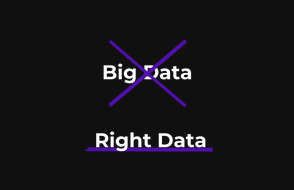A correlation describes a mutual relationship between two or more independent variables. The correlation can be either positive or negative which often is expressed as a value between -1 and +1.
If the correlation is between -1 and 0 the correlation between the two variables is said to be negative. A negative correlation describes a situation of which one variable decreases while the other varibale increases. If the correlation is a value between 0 and +1, the correlation is positive, which defines a reciprocal increase or decrease in both variables. An example of a positive correlation is BMI and weight. If the weight increases, the BMI also increases, while if the weight decreases, the BMI also decreases. The closer the correlation is to 0, the weaker this mutual relationship is, and if the correlation is 0, it means that there is no significant correlation between the two variables. A correlation is the most important tool for identifying the right data sources for a given problem.
Correlations can be both spurious and partial. A spurious correlation means that the reciprocal relationship seen is random. A partial correlation means that the reciprocal relationship exists because the two variables are dependent and correlation to a third variable.




